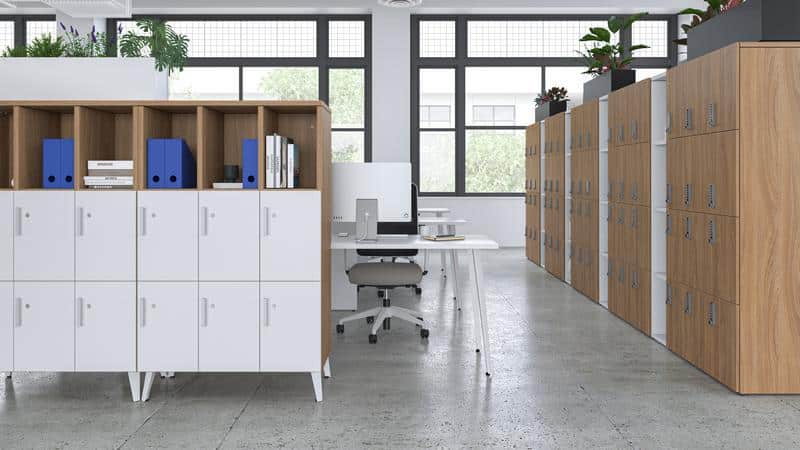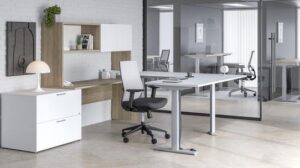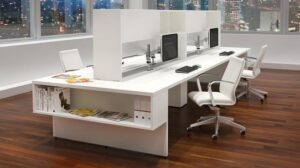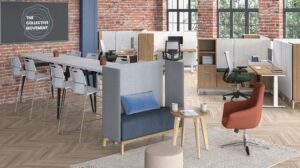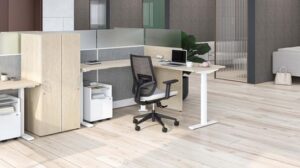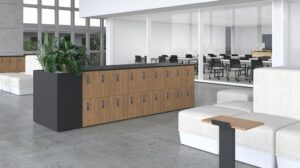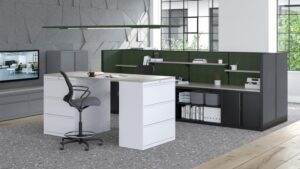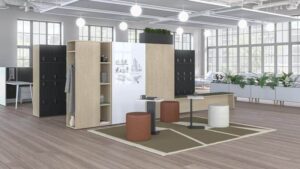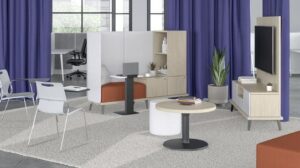What if the secret to better research, more inspired teaching, and stronger student-faculty relationships wasn’t hidden in the curriculum or the latest technology, but in the very chairs, walls, and spaces where professors spend their days? Picture a faculty office that feels less like an academic relic and more like a creative studio, a collaborative hub, or even a welcoming retreat. This isn’t wishful thinking-it’s the new frontier of university interior design, where office interior design, university interior design, and modular furniture are rewriting the rules of academic life.
Rethinking the Traditional Faculty Office
For decades, the default model for university interior design has been the private faculty office-a quiet, sometimes isolated room where professors grade, research, and meet with students. While privacy and focus are still essential, the modern faculty role is far more dynamic. Professors are not only researchers and teachers but also mentors, collaborators, and campus leaders. Office interior design must reflect this complexity, supporting a range of activities from deep concentration to lively discussion.
Imagine a faculty member preparing for finals week. In the past, they might have been confined to a static office, struggling to accommodate a line of students seeking last-minute help. Today, with modular furniture and flexible layouts, that same office can be quickly reconfigured: a movable table and stackable chairs create a collaborative zone for group study, while a quiet reading nook with soft seating provides a space for focused grading. This adaptability is the essence of contemporary office interior design, and it’s transforming university interior design across campuses.
The Power of Modular Furniture in University Interior Design
Modular furniture is a game-changer for faculty spaces. Unlike fixed desks and immovable shelves, modular furniture can be rearranged, expanded, or condensed to suit the needs of the moment. In university interior design, this means faculty can shift seamlessly between solo work, student meetings, and collaborative projects. A “kit of parts” approach-offices equipped with movable desks, storage, and seating, gives professors the freedom to personalize their space, making it truly fit their work.
Consider the impact on student engagement. When a faculty office is arranged with a welcoming, open layout, students are more likely to approach, ask questions, and build relationships. Modular furniture enables professors to remove physical barriers, such as imposing desks, and instead create shared spaces where students feel comfortable and respected. This subtle shift in office interior design can make the difference between a student who hesitates to seek help and one who feels empowered to connect.
Creating Collaborative Zones and Private Retreats
University interior design must balance two competing needs: the desire for quiet, private work and the need for open, collaborative engagement. Modular furniture makes this possible by allowing faculty offices to serve multiple functions. For example, a professor might use a partition to create a private corner for research in the morning, then open up the space for a team meeting in the afternoon. Lounge seating, movable whiteboards, and flexible tables turn any office into a hub for brainstorming and innovation.
In larger faculty suites, shared work areas and huddle rooms equipped with modular furniture foster cross-disciplinary collaboration. Imagine an economics professor and a literature scholar sharing ideas in a communal lounge, or a group of adjuncts using reservable desks near natural light to prepare for class. These spaces, thoughtfully designed with office interior design principles, break down silos and encourage the kind of “collisions” that spark new research and teaching partnerships.
Faculty Offices as Invitations, Not Barriers
The psychological impact of office interior design cannot be overstated. Students often feel intimidated by the prospect of visiting a professor’s office. The arrangement of furniture, lighting, and decor sends powerful signals about openness and approachability. University interior design that prioritizes transparency-glass fronts, sliding doors, and inviting entryways-helps to demystify the faculty office and make it a space for genuine dialogue.
A situational example: A student struggling in a statistics class is hesitant to attend office hours. In a traditional, sparsely furnished office, the student might feel like an unwelcome guest. But in a reimagined space with comfortable visitor chairs at eye level, a round table for conversation, and personal touches that reflect the professor’s interests, the student feels seen and supported. This is the power of thoughtful office interior design in action.
Supporting Faculty Well-Being and Institutional Goals
University interior design is not just about aesthetics-it’s about supporting the well-being and productivity of faculty. Modular furniture allows for ergonomic adjustments, so professors can alternate between sitting and standing, reducing fatigue during long workdays. Flexible layouts accommodate both introverted faculty who need solitude and extroverted educators who thrive on interaction.
From an institutional perspective, office interior design and modular furniture also address practical concerns. Faculty offices are among the largest users of campus real estate, yet often have low utilization rates. By adopting shared workspaces, reservable desks, and multi-purpose rooms, universities can optimize space, reduce costs, and support sustainability goals. Faculty who once worried about losing private offices often find that well-designed, flexible environments actually enhance their work and relationships with students.
Change Management: Bringing Faculty and Students on Board
Transforming faculty spaces is not without its challenges. Change management is essential. Successful university interior design projects involve faculty and students in the planning process, piloting new layouts, and gathering feedback. When professors can physically experience modular furniture and flexible office interior design, initial skepticism often gives way to enthusiasm. They see firsthand how these spaces support their diverse responsibilities and foster a sense of community.
Key Takeaways
- Office interior design and modular furniture are revolutionizing university interior design, making faculty spaces more adaptable, collaborative, and welcoming.
- Modular furniture enables quick reconfiguration of offices, supporting everything from private research to group meetings and student consultations.
- Thoughtful design choices in faculty offices can break down barriers, making professors more approachable and students more engaged.
- University interior design that balances privacy and collaboration supports faculty well-being and institutional efficiency.
- Change management and faculty input are crucial to the success of any redesign, ensuring that new spaces truly meet the needs of educators and students.
Final Thoughts
The future of faculty spaces is flexible, dynamic, and deeply human. By embracing office interior design, university interior design, and modular furniture, academic institutions can create environments that support the full spectrum of faculty work-from quiet reflection to vibrant collaboration. These spaces don’t just house educators; they empower them to connect, innovate, and inspire the next generation. When we design with intention and empathy, we build universities where everyone-faculty, students, and staff-can thrive.
Frequently Asked Questions (FAQ):
How does office interior design impact student-faculty relationships in universities?
Office interior design shapes the atmosphere of faculty spaces, influencing whether students feel welcome or intimidated. Modular furniture and open layouts create inviting environments that encourage students to seek help and engage in meaningful conversations.
What are the benefits of modular furniture in university interior design?
Modular furniture allows faculty to adapt their offices for different tasks, from focused research to collaborative meetings. It supports flexible work styles, maximizes space utilization, and can be tailored to individual preferences.
How can universities balance privacy and collaboration in faculty offices?
By using modular furniture and flexible layouts, university interior design can create spaces that serve as private retreats when needed and open, collaborative zones for meetings and student interactions.
